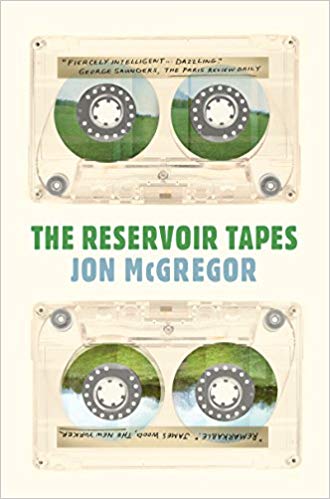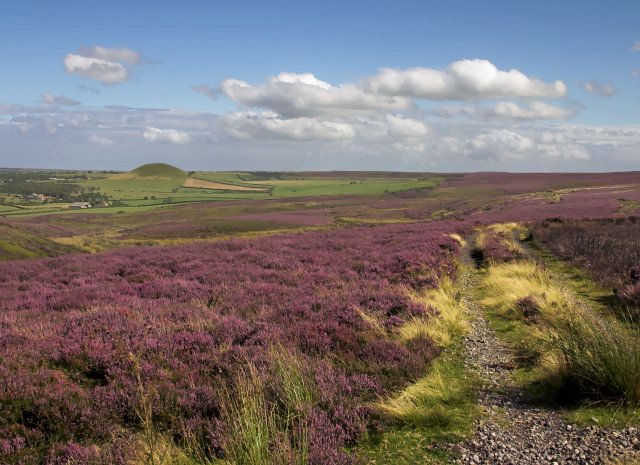Note: Jon McGregor was WINNER of the IMPAC Dublin award for Even the Dogs in 2012, and is WINNER of the Costa Award, the Somerset Maugham Prize, and the Betty Track Award for Reservoir 13 in 2017.
“It’s actually rather misleading, isn’t it, the walk up to Black Bull Rocks? The path isn’t as direct as it looks from the bottom of the hill. There are several narrow gorges or valleys on the way. The path drops down steeply and climbs up and out of each of these… And the streams through each of these are running high at this time of year so it’s not always a simple matter getting across them….”—interview of Charlotte, mother of the missing Becky Shaw.
 The story of Becky Shaw, daughter of Charlotte and Joe Shaw, a thirteen-year-old girl who disappeared while vacationing in a rural English village during the holiday season, was introduced and developed in British/Bermudian author Jon McGregor’s Reservoir 13 in 2017, a novel which won three major prizes in the UK. In that novel, McGregor focuses not on the search for Becky but on how her disappearance affects everyday life in the community. Everyone in town is looking for her, but as the search bears no fruit and few clues evolve from all the investigation, the residents are gradually drawn back into their more immediate personal issues of earning a living. Time has passed – lambing season is now underway, and the cattle are ready for pasture. Life has continued, and Becky’s unknown fate has receded from the public consciousness as people busy themselves once again with their daily lives.
The story of Becky Shaw, daughter of Charlotte and Joe Shaw, a thirteen-year-old girl who disappeared while vacationing in a rural English village during the holiday season, was introduced and developed in British/Bermudian author Jon McGregor’s Reservoir 13 in 2017, a novel which won three major prizes in the UK. In that novel, McGregor focuses not on the search for Becky but on how her disappearance affects everyday life in the community. Everyone in town is looking for her, but as the search bears no fruit and few clues evolve from all the investigation, the residents are gradually drawn back into their more immediate personal issues of earning a living. Time has passed – lambing season is now underway, and the cattle are ready for pasture. Life has continued, and Becky’s unknown fate has receded from the public consciousness as people busy themselves once again with their daily lives.
Falling somewhere between a novel and a story collection, McGregor’s new book, The Reservoir Tapes, continues this narrative. Though it revolves around the same subject matter and includes most of the same characters as Reservoir 13, McGregor’s new work is quite different in tone and  structure. Here the author takes the reader inside the lives and thoughts of fifteen of the original characters, all of whom are featured in their own chapters which reveal their inner thinking and their memories, along with their fears, vulnerabilities, quirks, and even suggestions of past violence. Individualized in this way, these chapters “speak” to the reader in new ways, creating a sense of hidden danger and violence, raising new questions about what happened to Becky Shaw, and forcing the reader to consider the possibility that someone in the community may have hidden knowledge of what happened to her. Time is flexible, moving back and forth, and as the characters overlap within each other’s stories and memories, as they do in real life, the reader slowly begins to see that this seemingly quiet rural community, dependent on the vagaries of nature, may be far more violent than what was seen in the previous novel.
structure. Here the author takes the reader inside the lives and thoughts of fifteen of the original characters, all of whom are featured in their own chapters which reveal their inner thinking and their memories, along with their fears, vulnerabilities, quirks, and even suggestions of past violence. Individualized in this way, these chapters “speak” to the reader in new ways, creating a sense of hidden danger and violence, raising new questions about what happened to Becky Shaw, and forcing the reader to consider the possibility that someone in the community may have hidden knowledge of what happened to her. Time is flexible, moving back and forth, and as the characters overlap within each other’s stories and memories, as they do in real life, the reader slowly begins to see that this seemingly quiet rural community, dependent on the vagaries of nature, may be far more violent than what was seen in the previous novel.
Presented originally as a series on BBC Radio, the stories open with a monologue by an unnamed person who is interviewing Charlotte Shaw, Becky’s mother, in the months after Becky’s disappearance. In a wonderful tour-de-force, Charlotte never speaks – at least to the reader. All information about Becky – and her mother’s reaction to her disappearance – is revealed through the interviewer’s responses. The interviewer asks, for example: “What would Becky have had [for breakfast] if she was eating breakfast alone?” The only response: “I know….But these details. They help to build a picture….If you could….Okay,” clearly indicating that Charlotte is refusing to answer. The mother’s tears, her pauses, her reluctance to respond to questions about a possible boyfriend, and their mother/daughter tensions, lead to what is apparently Charlotte’s decision to stop the interview. To this, the interviewer then suggests that the interview would be “a chance to [tell] your side of the story,” implying that the mother may have come under scrutiny by the community – the same kind of scrutiny which the reader is about to apply here to the rest of the characters who follow.
An ominous tone begins early with the introduction of Deepak, a young boy, somewhat overprotected by his mother, who delivers papers on his bike. When the bike’s chain jams and Deepak cannot fix it, a man suddenly appears and insists on helping him. Afterward, the man also persuades Deepak to come inside his house to wash up. A gun lies in plain sight on the table, terrifying Deepak. Later the reader realizes that this same man is seen frequently around other local children, also armed with his gun, though there have been no known incidents. The author continues his mood of menace and threat in the next, much more subtle, chapter. The Visitor Center for the community, well known for its serenity, its nature walks, and its beautiful “butterfly safaris” through the hills, also serves, when necessary, as the center for Mountain Rescue for missing persons. Just recently, while on a hike with Girl Guides, one Guide vanishes, initiating a search. Rescuers find her in a sinkhole and eventually haul her up on a stretcher. The irony of this dire episode in immediate juxtaposition with images of the butterfly safari’s identification of a rare “Essex Skipper” butterfly is inescapable.
Carefully controlling the sinister hints and episodes, McGregor continues to add information which shows nature – especially human nature – to be much more menacing than what it appeared to be in Reservoir 13. Becky, the reader learns here, had run away once before her recent disappearance, and her friendships with other youths have not been innocent. She has participated in the bullying and humiliation of another child. In other disquieting chapters, the brother of a character makes threatening gestures toward a young woman who is attracted to him; a butcher looking for a new puppy runs afoul of a man who may be involved in a crime syndicate; a mother whose daughter ran away and never came back is still mourning; and a fearsome man regarded as a “kind of bogeyman figure” in the community adds to the complications and the prevailing sense of doom which permeates The Reservoir Tapes.
People who have read and liked the prize-winning Reservoir 13 will have an advantage in reading this experimental novel/collection because of their familiarity with the community and many of its characters, but others may find this work so effectively written from a character and suspense standpoint that they like it as much as McGregor’s earlier Reservoir novel (especially if they keep a character list). Dramatic, insightful, and effective, The Reservoir Tapes makes one wonder if another entry in a Reservoir series might be on its way.
Photos: The author’s photo appears on https://bathfestivals.org.uk/
The heather moorlands are shown on https://en.wikipedia.org/
The Essex Skipper butterfly, a rarity seen on the moors here, is from https://butterfly-conservation.org/
A sinkhole on the moors may be seen on https://www.independentcottages.co.uk
The very sick puppy alternative that a man was forced to accept and pay for is found here: https://www.florencecashmereyarn.com




